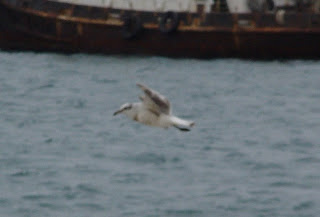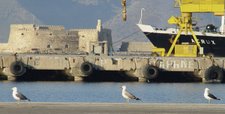

May is breeding season. Larus michahellis (Yellow-legged Gull) is common everywhere on Crete. Costs, damps, reservoirs, olive plantations, even in plateaus at high mountains! In some areas breeding colonies are close to humans, for example the Elafonissi area but most colonies are in remote islets. The population is still uknown, at least 4000 pairs and certainly increasing.

 Larus audounii (Audouin's Gull) is a local breeder on some islets in NE Crete that are generally difficult to access and that is good for them! But some breed close to turistic areas (e.g. Elounda). It is endagered in Greece and the Cretan population is very small, only few tens of pairs. May is the best month to see them on Crete.
Larus audounii (Audouin's Gull) is a local breeder on some islets in NE Crete that are generally difficult to access and that is good for them! But some breed close to turistic areas (e.g. Elounda). It is endagered in Greece and the Cretan population is very small, only few tens of pairs. May is the best month to see them on Crete.All other species of Gulls are rare this season on Crete and only Larus fuscus fuscus (Baltic Gull) is regular as migrant, but in very low numbers, mainly in early May. In harbours may stay some immatures Caspian, Black-headed and Meditteranean or rarely other species.






















